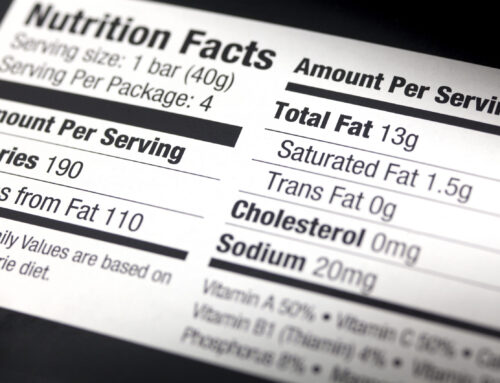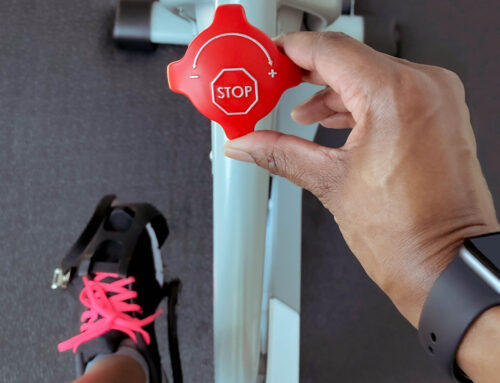Food labelling is a nightmare there’s no two ways about it. This is largely because companies operating in the food industry have very strict regulations and standards to meet and fulfil. This can sometimes make it difficult for you, the consumer in general never mind when you’re actually asserting some physical effort into that lifestyle change but find yourself constantly conned out of your results.
The bottom line is, the company wants your money. Regardless of the quality of the product they will do their outright best, and even invest heavily into making the product look, sound or seem better than it is for you and your body.
The labelling industry have picked up on buzz words to help back up their claims about a products worth. They have to have listed ingredients on the packaging. The ingredients are listed in an ‘amount’ order. This means, the first ingredient on the packet is also the highest quantity, second ingredient, second highest amount so on and so forth. This in its self can actually help you identify a quality product over a poor quality product. If you see a particular product boasting something, and it’s way down the ingredient list, it’s not all it’s cooked up to be.
As trainers we here at Body Planners are no different to any other, in that we continuously dispute or cross words about quality food not busting the bank. A steak dinner with two veg and source of carbs sat beside your £1.50 freezer shop pizza is always going to look expensive but your body will love you a whole lot more for the healthier option. With food you really do get what you pay for and if your investment is buttons, the only reward you’re going to get is a cupboard full of junk food *that can be consumed as part of a healthy diet*. We’ve all seen that on food packaging, and to some extent it’s true. This is why we beat the drumstick about knowing your macros, regularly checking in on yourself with measurements and weight.
Contributing to the general woes of food packaging and why were pulled into buying stuff that’s no good is portion information. Generally portion info comes in per 100g or per portion, and just to bust your balls, portion sizes are hardly ever in a denomination that fits into 100g. Portion size is one of the biggest, most overlooked part of food intake I think. Lots of people think because their mam said it was good hearty snap when they was a lad, they can have as much as they like. This is common amongst generally active people, inactive people and athletes of all levels. It is believed by said individuals that they can consume obscene amounts of food (or calories) just because they’ve dealt themselves some physical, mental or emotional stress through work, circumstances, training or other. Fundamentally that priceless brainy calorie counter (your body) doesn’t see it that way. If you burn 2000 calories and consume 2200 daily, you’ll gain weight eventually whether you’re training to colonise Mars or destroy London Marathon.
If you want to lose weight, low fat food items are a nailed on consideration. This is a false economy because to maintain a palatable consistency following the reduction of fat, sugar is introduced to the product. EVERYTHING we eat will be turned to stored sugar (glycogen) eventually because your body only runs on sugar but foods containing high sugar amounts are absorbed and stored quickly, and at a minimal effort to your body. This is why they don’t satisfy your hunger for very long and as a result can lead to overeating.
To be ‘low fat’ this item has to legally contain less than 3g of fat per 100g of dry weight. Slimming world (just an example) is a low fat diet. On a slimming world plan, boiled rice is ‘free’ meaning… go for your life. Eat as much as you can. Egg fried rice however by their standards is a ‘syn’ because the fat in the egg pushes it over 3g fat per 100g, when in truth the egg fried rice injects a little more protein into the consumers diet and would satisfy hunger for longer. While we’re on protein, many products boast ‘high protein’ but there isn’t a legal figure as to what it must meet. Seeds are high protein but because they’re tiny, to get any benefit from the protein in them you have to eat a fair amount. The downside is seeds contain fats too and too much can be harmful as we all know. But can’t too much of anything? Yes, it can!
Low fat has a legal requirement, lower in fat or reduced fat does not. All reduced or lower in fat means is exactly what it says. It doesn’t mean it’s low fat or healthy.
For me it’s difficult to appreciate the difficulties a lot of people face with this subject because I work with it day in day out. I have to give people the benefit of the doubt, is it common sense? Is it because I know what to look for and what not to? Is it naivety? It could be a combination because it genuinely can be mind numbingly painful at times. The best person these days (aside us obviously) to seek advice when it comes to packaged food is the person who designed the box, because they’ll understand what is in it, in what amounts and whether it actually is as good as they say.
Bear with me, you’re doing well. There’s only so far I can take this one. Net calories is a thing that has snuck onto the scene. Net calories are basically invisible to your intake (or so they’d have you believe). Net calories are the amount of calories your body takes from a product, not amount of calories in a product. The calories are still there. Net calories are usually in supplement bars. It is theorised that because your body doesn’t absorb fibre, the calories made up from fibrous foods don’t do you any harm. Wrong, they still get digested, and absolutely count.
Moving on.
For me it is brutally simple. I partake in a beer or wine here or there and the odd bit of naughty snacks stuff. Chocolate, crisps and even the odd can of lifesaver (Coke, if you’ve ever cycled far enough you’ll know what I mean) all sneak in, it’s almost impossible for it not to because the truth is, it looks too good. The designers are good at their job.
Food labelling 100% is a problem, and the majority of people in society don’t know where to start. Traffic light systems, red or green days, low GI, gluten free… who cares. If you’re eating refined products, you’ll always con yourself out of those results you’re chasing.
It comes back to the same basic fundamentals of, tracking your food to the macros you know your body can handle. Conducting regular training or exercise to condition the body and allow it to maximise the usage from said calories, and repeating this process to a good level of consistency.







 >
>

Leave a Reply